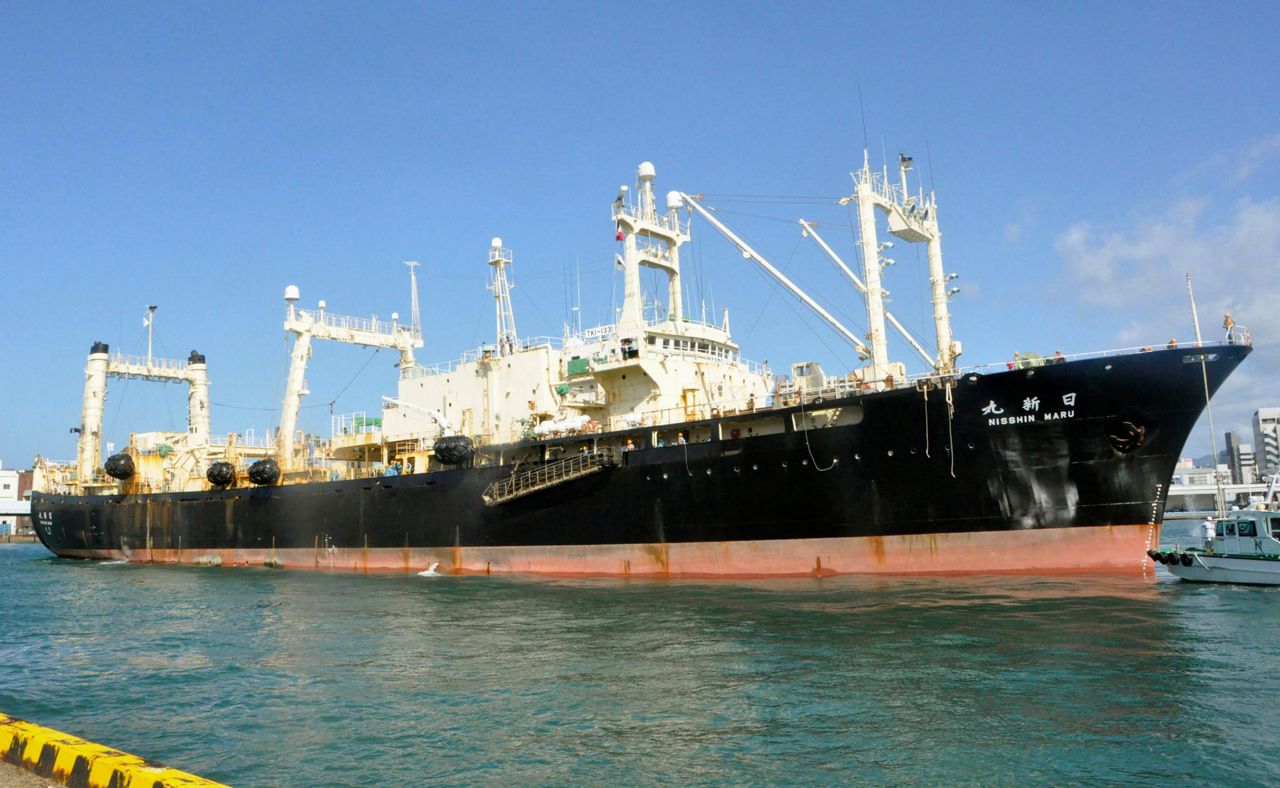TOKYO (AP) — A Japanese whaling ship returned home to the country’s southwest Friday after almost meeting its annual quota, ending its first commercial whaling season in 31 years.
Operator Kyodo Senpaku Co. said its main factory ship Nisshin Maru returned to its home port of Shimonoseki, Prime Minister Shinzo Abe’s home constituency, after catching 223 whales during its three-month expedition off the Japanese coast. Nisshin Maru’s two support ships, Yushin Maru and No. 3 Yushin Maru, also returned to their home ports.
Japan resumed commercial whaling on July 1 after leaving the International Whaling Commission, promising that the whalers would stay within the country’s exclusive economic waters.
Japan had conducted research hunts for 31 years in the Antarctic and the Northwest Pacific that conservationists criticized as a cover for commercial hunts banned by the IWC.
Kyodo Senpaku President Eiji Mori praised the whalers for returning with “better than expected” results despite earlier uncertainty because of their lack of experience in the area.
“We were worried if we could catch any, but they did a great job,” Mori said. “We will examine the results closely and make a plan for the next season.”
Of the quota of 232 whales allocated to the main fleet, they caught 187 Bryde's, 25 sei and 11 minke whales, only nine minke whales short of the cap. The fleet brought back an estimated 1,430 tons of frozen whale meat from the catch, down 670 tons from last year’s Antarctic hunts.
Separately, whalers operating smaller scale hunts in waters just off Japan’s northeastern coasts already filled their seasonal quota of 33 minke whales, fisheries officials said. Days after the resumption, their fleet of five small boats returned with two minke whales, whose fresh meat fetched as much as 15,000 yen ($140) per kilogram (2.2 pounds) at a local fish market auction celebrating the first commercial hunt in three decades.
“It’s wonderful that we had a good start,” said Agriculture, Forestry and Fisheries Minister Taku Eto, a member of Abe’s ruling party, which has pushed for commercial whaling. “We will continue our support so that commercial whaling gets on track.”
His ministry is requesting a 5.1 billion yen ($48 million) budget for fiscal 2020 to support commercial whaling.
While opponents condemn Japan’s commercial whaling, others question if the embattled whaling program can survive changing times and tastes.
Whale meat was an affordable source of protein during the lean times after World War II, with annual consumption peaking at 223,000 tons in 1962, but whale was quickly replaced by other meats. Today, annual consumption is down to 4,000-5,000 tons, according to the Fisheries Agency.
Eto says he still has hope. “I recently had fried whale for the first time in years, and it was outstandingly delicious. ... I’m sure consumers will appreciate the taste once they try it.”
___
Follow Mari Yamaguchi on Twitter at https://www.twitter.com/mariyamaguchi
Copyright 2019 The Associated Press. All rights reserved. This material may not be published, broadcast, rewritten or redistributed.




